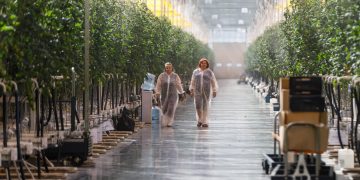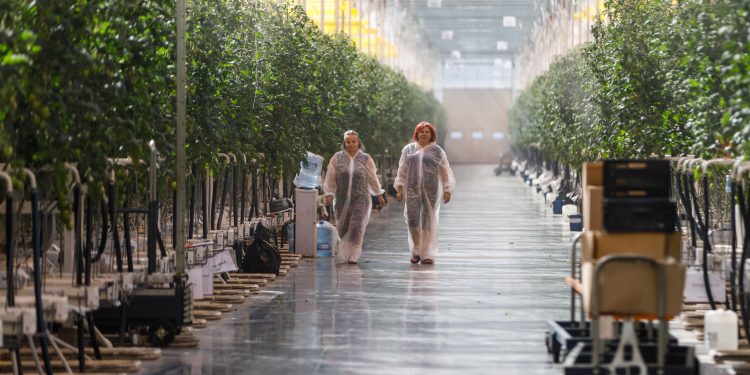How do they work, what do they eat and what do those who grow more than 40 thousand tons of vegetables a year dream about.
So that residents of the Volgograd region can eat fresh vegetables even in winter, they work here all year round from early morning until late at night, catching literally every ray of the sun. We spent one day with agronomists and other employees of the greenhouse complex “Vegetable Grower” (known under the brand name “BOTANY”), who told not only about how modern employees of the agricultural sector work, but also about how cucumbers are planted, why insects are bred in greenhouses and even about “immaculately conceived” tomatoes.
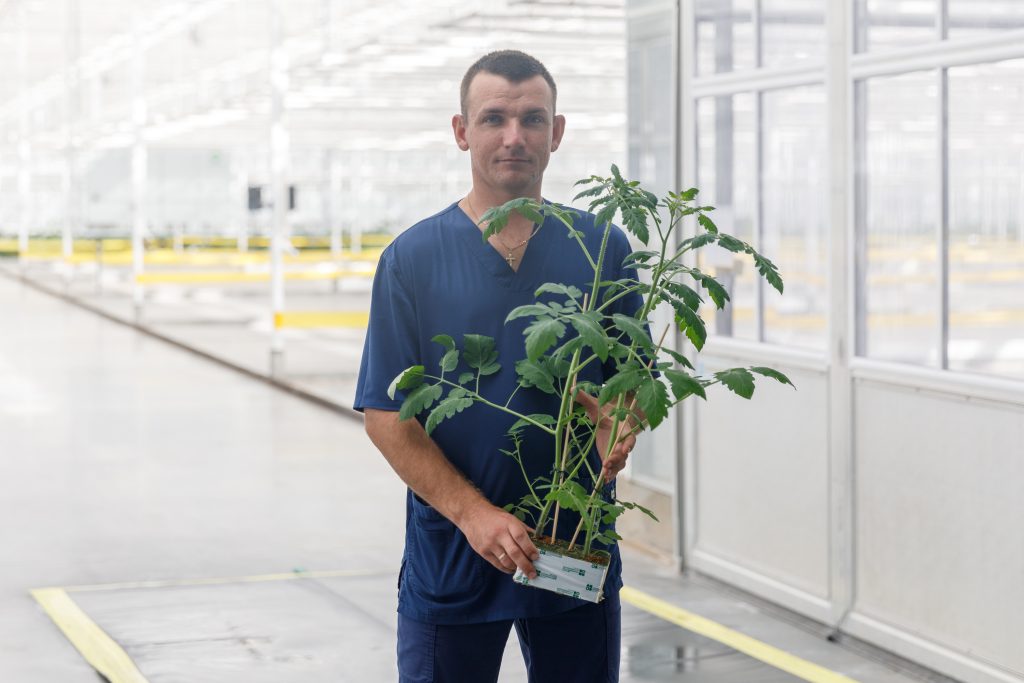
Denis Mironenko, the head of the seedling department, is the first to meet in the greenhouse complex “Vegetable Grower”. He has been working on the farm for 6 years, came here right after university and military service. He started his career as an agronomist-foreman.
— I wanted to enroll in a military school, but I didn’t, so I chose another direction for myself — plant protection at the agricultural academy. He graduated from graduate school, served in the army and in 2016 came to the “Vegetable Grower”. A few years later, he headed the workshop and seedling department. And to be honest, I’m on the same wavelength with plants, I understand what they need and what to expect from them. There is always silence, tranquility and a pleasant smell, so I really love my job,” Denis admits.
The gigantic areas of two seedling departments stretch over almost 7 hectares of land. It is always eternal summer here and seedlings are constantly being grown. Only a short period of time, less than a month, greenery is not visible here: in July-August, all plant residues are removed, the areas are washed, treated from pests, preparing them for the new season.
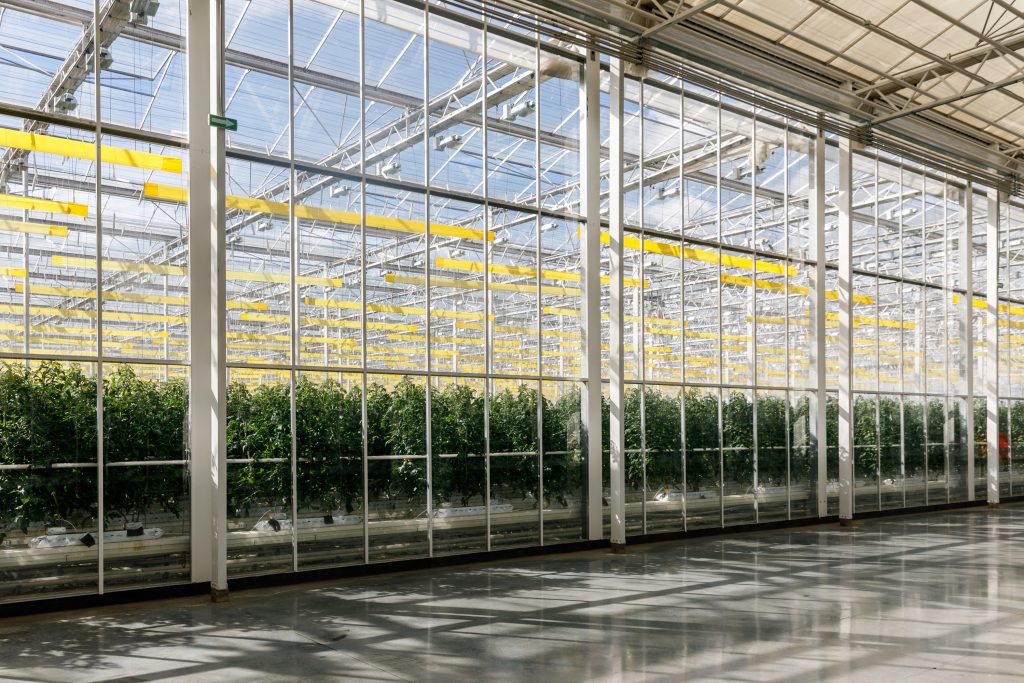
The largest seedling department — tomato — occupies an area of 4.9 hectares — vegetables are grown here by a system of heating
Photo: Alexey Volkhonsky
The morning of the head of the seedling department begins at 05:00 in summer to catch the coolness, and at 07:00 in autumn. Denis personally visits all his greenhouses, inspects the plants and brings the plans for the day to the employees.
— The heart of any department of the greenhouse complex is the operator’s room, — says Denis. — There is a climate computer here, with which we set and adjust all temperature conditions, adjust humidity. When we come to work, the first thing we do is study graphs to understand how plants lived at night, and depending on this, we build a program for the day.
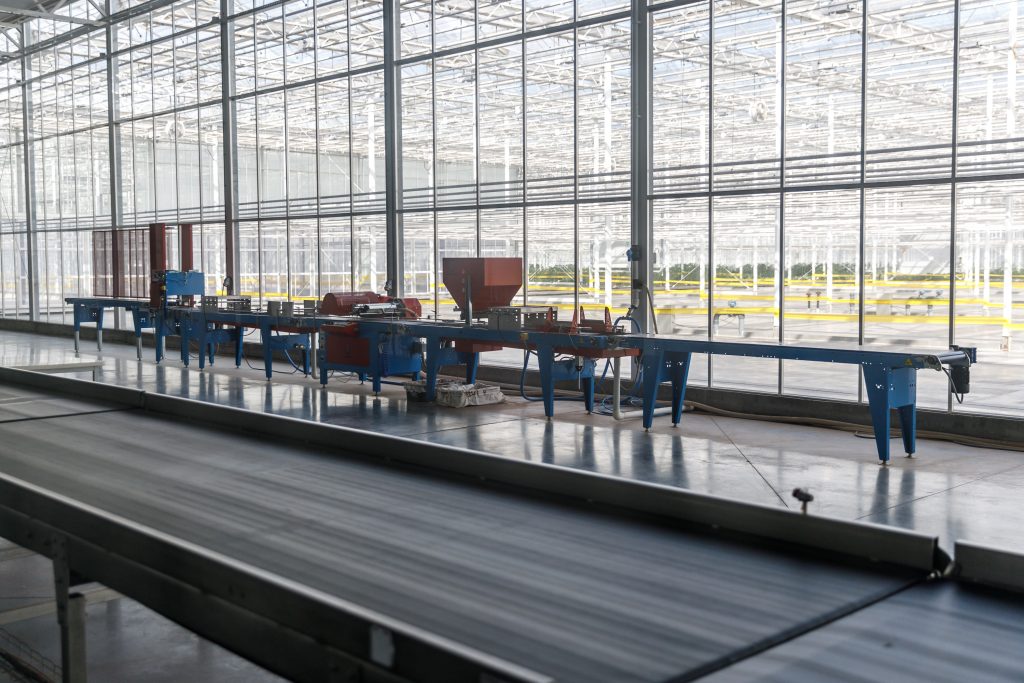
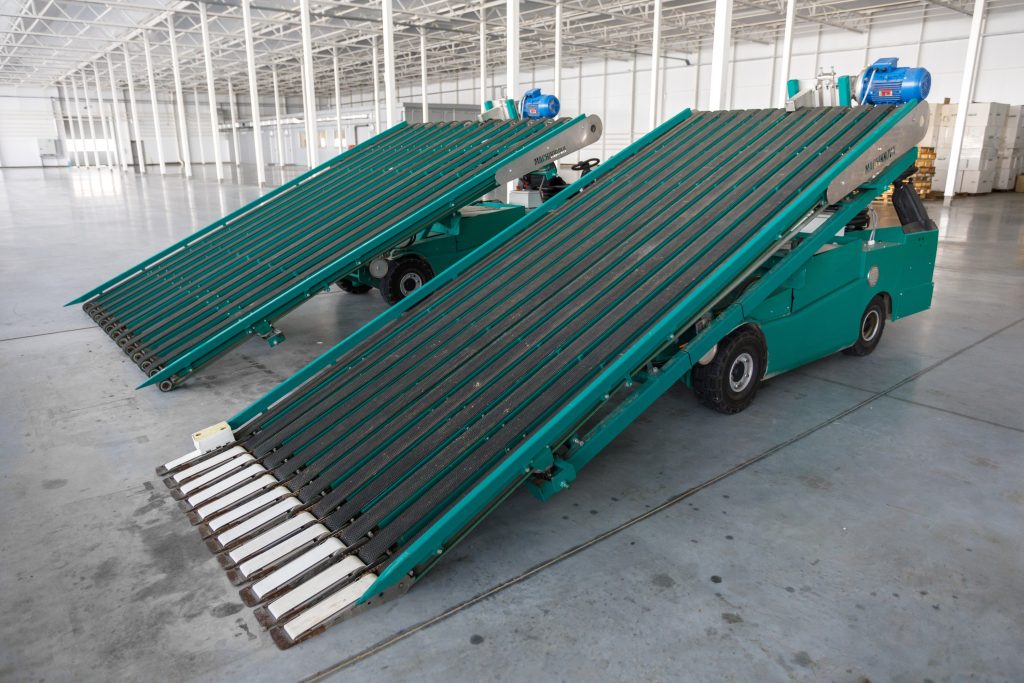
Photo: Alexey Volkhonsky
— At night, plants sleep like people, and automation monitors the work of the seedling department, which keeps the plants in balance, — explains Denis Mironenko. — The daylight for cucumbers lasts 20 hours, for tomatoes — 18 hours, when they receive a large amount of solar energy. Therefore, even when it’s plus 40 outside, the thermometer in the seedling department does not rise above 25 degrees during the day and does not fall below 18 degrees at night.

At the same time, 12 hectares of tomatoes can grow at once in the seedling compartment, two plants can grow at once in one cube of seedlings
Photo: Alexey Volkhonsky
Volga cucumbers and tomatoes are grown from Dutch seeds. They say they have better breeding. Instead of traditional irrigation, a method of flooding plants is used, and instead of the usual soil, a mineral wool substrate is used, which allows you to completely abandon the use of chemicals, rationally use water for irrigation and labor resources. The employees themselves admit that they enjoy eating their own products, because they know for sure about its high quality and true purity.
— We grow plants from seeds to full-fledged seedlings. It takes about 30 days. We use only the most effective varieties: round tomato “Merlis”, two types of plum-shaped tomatoes “Jorney” and “Prunax”, and from cucumbers prickly short-fruited “Bjorn”, medium-fruited smooth “Mewa” and medium-fruited prickly “Malachite”. Every year we test new varieties, but we always focus on the tastes of the consumer,” explains Denis Mironenko.
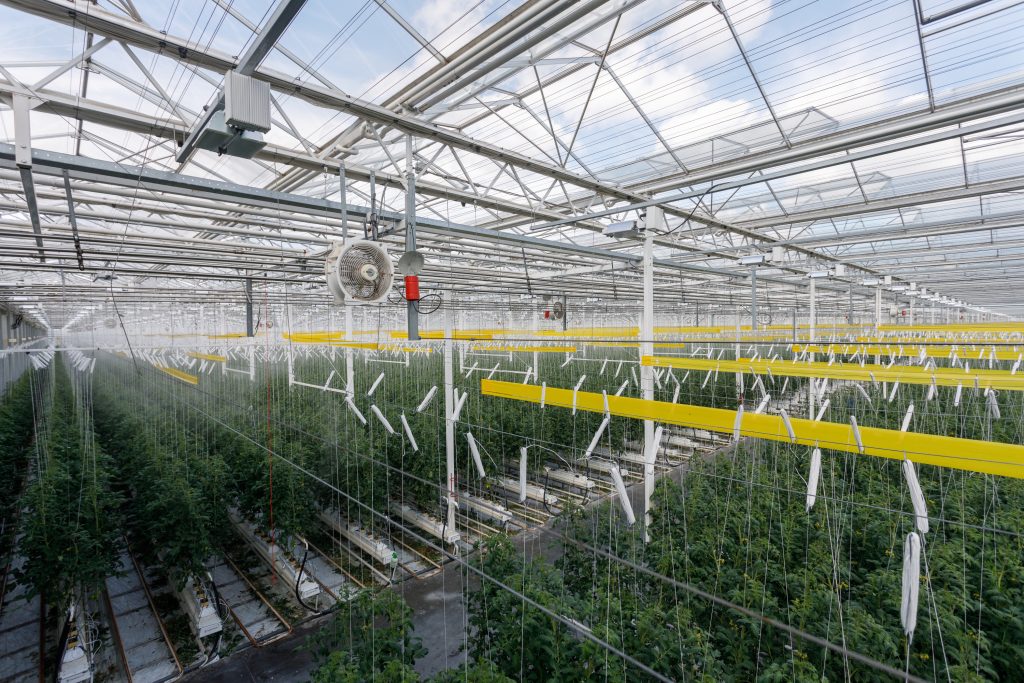
In the seedling department, the temperature never rises above 25 in the afternoon — this is closely monitored by employees
Photo: Alexey Volkhonsky
On the way from the seedling to the tomato department, Yuri Sudarev, the general director of LLC “Vegetable Grower” (TM “BOTANY”), meets. He personally inspects greenhouses and carefully instructs his employees about something. Now the Volga greenhouse complex is one of the largest producers of cucumbers and tomatoes in all of Russia and has a giant production site. These are two seedling departments, six greenhouses with a total area of about 70 hectares and two logistics centers — separately for cucumbers and tomatoes. There are also own energy centers.
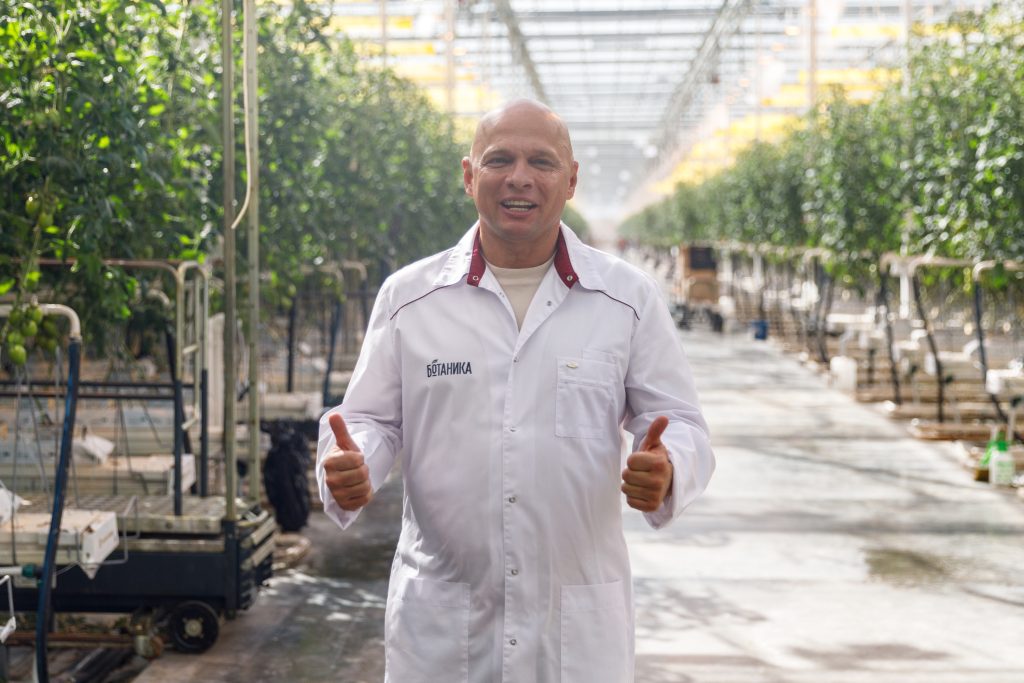
The general director of LLC “Vegetable Grower” (TM “BOTANY”) Yuri Sudarev says that the company always takes care of each of its almost a thousand employees
Photo: Alexey Volkhonsky
— For us, the main value is people. Therefore, this year we focused on improving the productivity and earnings of our employees,” says Yuri Sudarev, General Director of LLC “Vegetable Grower” (TM “BOTANY”). — We give people the opportunity to earn more. The more and better an employee does his job, the higher his salary. The average salary of vegetable growers today is 38-40 thousand rubles. But there are also those who earn up to 100 thousand.
Many people have been working here for 10-15 years, as we try to create the most comfortable working conditions, take care of our employees. The company provides workwear, provides free lunches, delivers to the place of work. This year we have insured all our employees against accidents. We have also launched a program to attract employees’ children, thereby trying to create a new value for the company — labor dynasties.
Sergey Averin: “I have a love for vegetable growing from my grandfather”
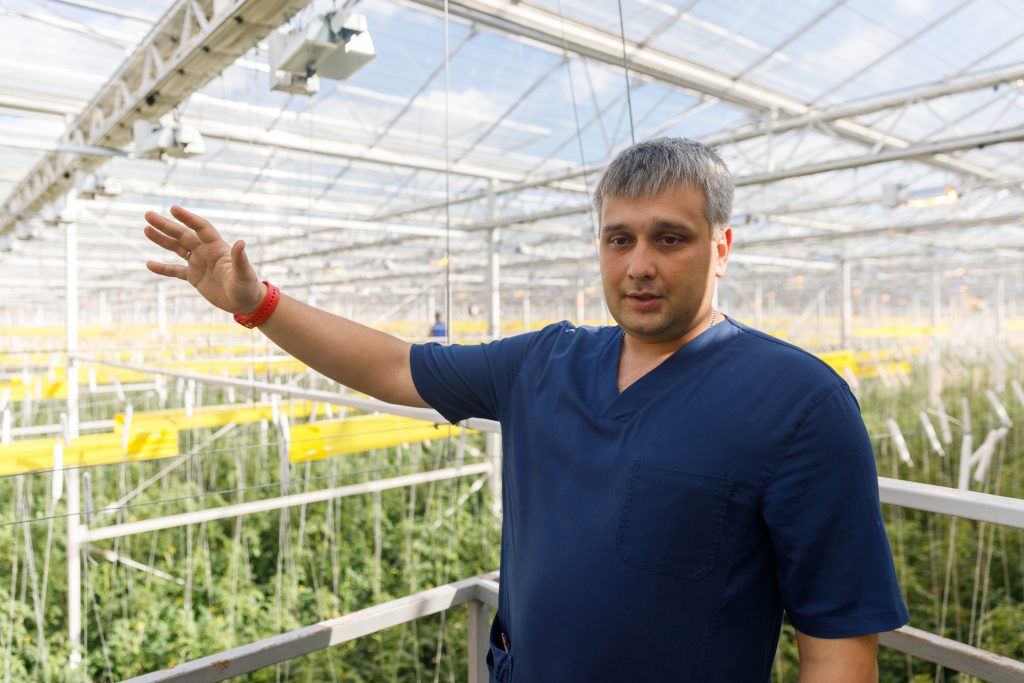
Sergey Averin is a hereditary vegetable grower and has been learning to take care of hectares of vegetables since childhood
Photo: Alexey Volkhonsky
Sergey Averin, an agronomist and foreman, is already waiting in front of the entrance to tomato paradise. Just like that, he does not even allow you to approach tomatoes: first you need to put on a disposable suit, put shoe covers on your feet and disinfect your hands with a special compound. Moreover, it is not only curious journalists who are disinfected here: greenhouse workers, moving from block to block, perform the same procedures. Sometimes you have to change clothes several times a day.
— There are several reasons for such sterility, ranging from the possibility of transferring the larvae of harmful insects to the ingress of viruses and various diseases from the environment. Therefore, in any department — the strictest quarantine, — explains Sergey.
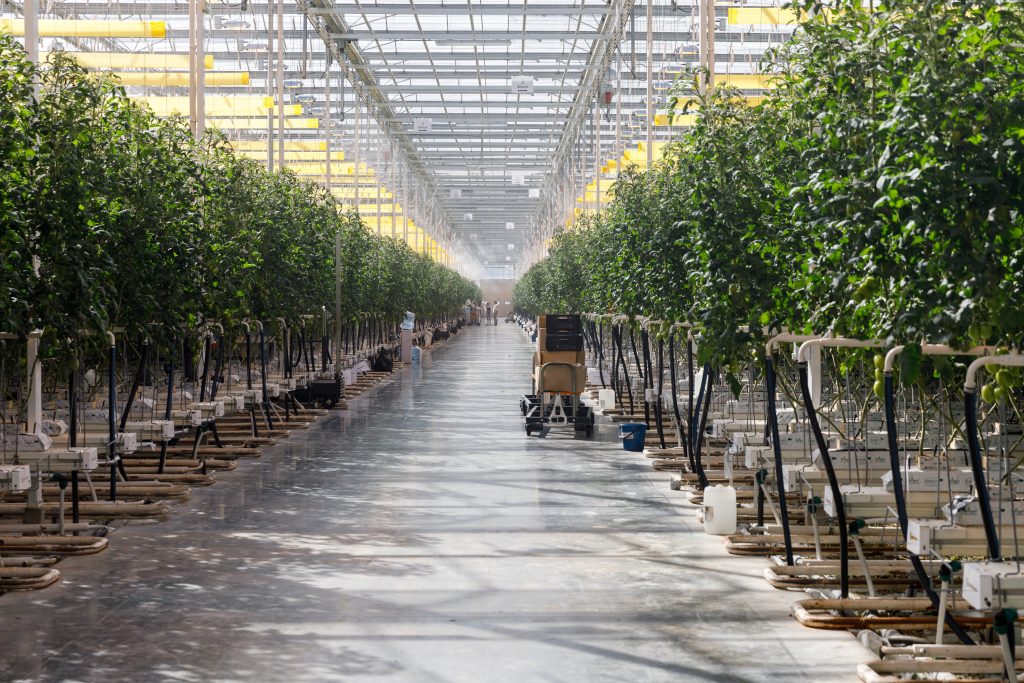
The tomato greenhouse consists of four blocks with a total area of almost 6.5 hectares each, where about 205 thousand plants are located at once
Photo: Alexey Volkhonsky
Sergey Averin has been working in the greenhouses of the “Vegetable Grower” since 2016. I came to modern greenhouses from the “open ground” — from one of the local farms. He admits that he was immediately struck by the technology — vegetables are grown here all year round, so he decided to stay first as an agronomist-crawler on cucumbers and is now engaged in growing tomatoes in a new greenhouse, which was built in 2019.
— For seven years I studied to be an agronomist at college and university, but I had to learn everything in a new way. I probably have a love for vegetable growing from my grandfather. He was also an agronomist, chairman of the collective farm. As a child, I participated in the cultivation of fields with him, rode a “cornhusker” and decided to go into agriculture myself. Why? It’s simple: the result of our work is always visible and benefits people,” says Sergey.
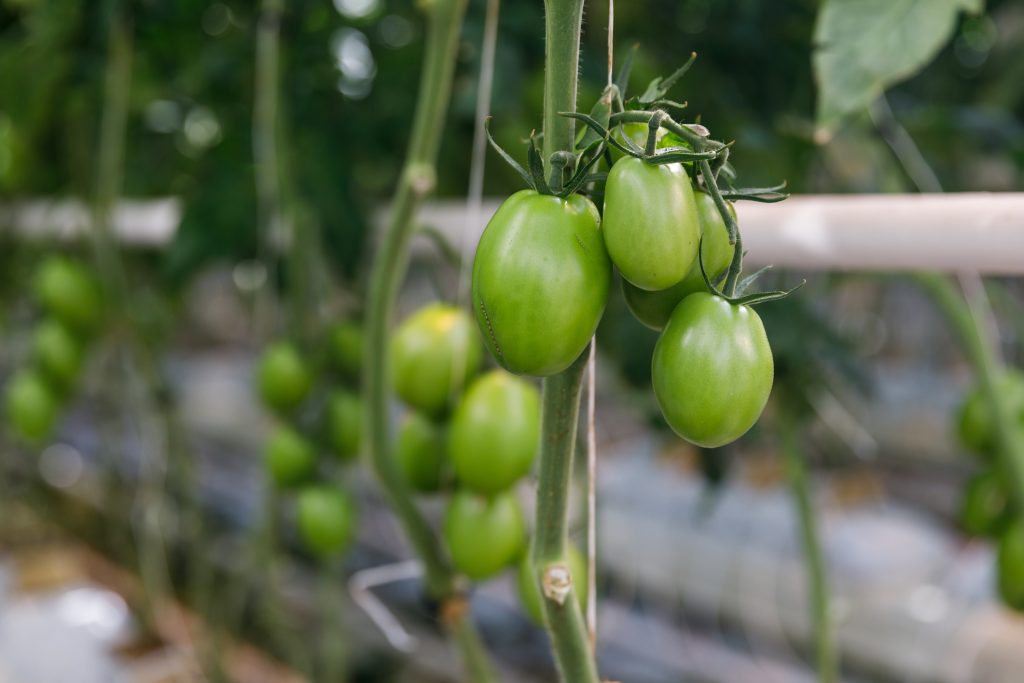

Photo: Alexey Volkhonsky
During the day, the agronomist-foreman winds up more than one kilometer. In order to control the growth of plants, to make sure that everyone has enough nutrients, that the bush develops properly, Sergey goes through almost every row of each block — and there are dozens of such rows in one block.
— In the new greenhouses, the technologies of additional lighting, the climate control system and protection from the external environment have been improved — the plants are stronger, healthier, respectively, and yield more crops, — explains Sergey. — We can only take good care and collect the fruits. And be sure to monitor how bumblebee families work.

Photo: Alexey Volkhonsky
Tomatoes are tied by “immaculate conception”, that is, self-pollination. But in order to improve the quality of fruits and get a rich harvest, insects are bought in greenhouses, and whole families. Under the roof of the greenhouses, you can see small cardboard beehives, and around the plants — circling bumblebees, which additionally pollinate tomatoes. Employees sometimes feed them sugar syrup so that they live especially well in greenhouses.
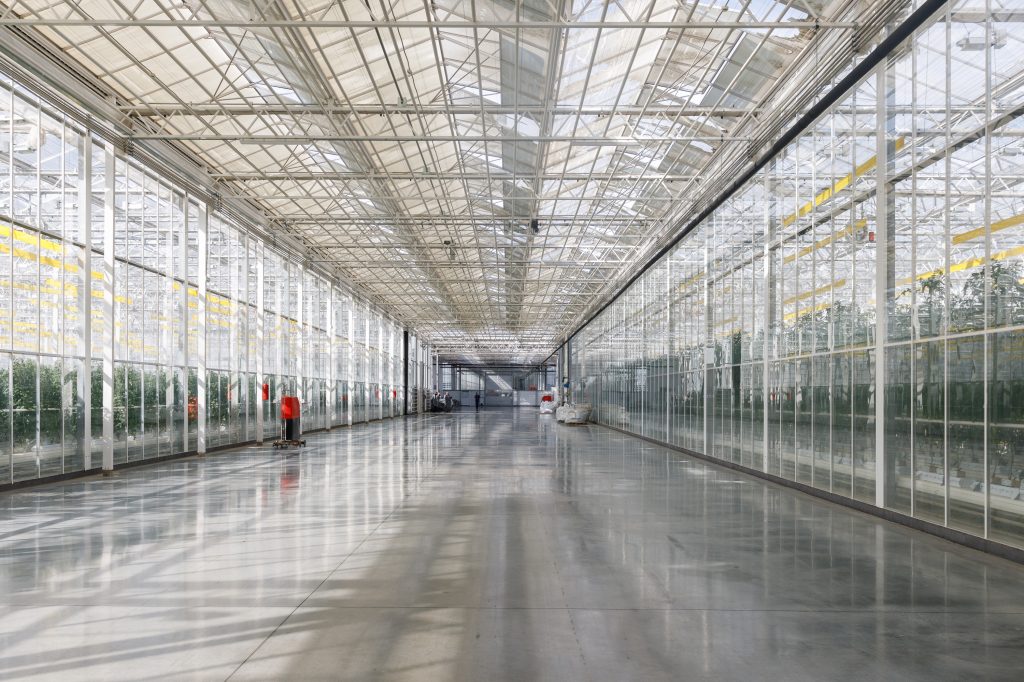
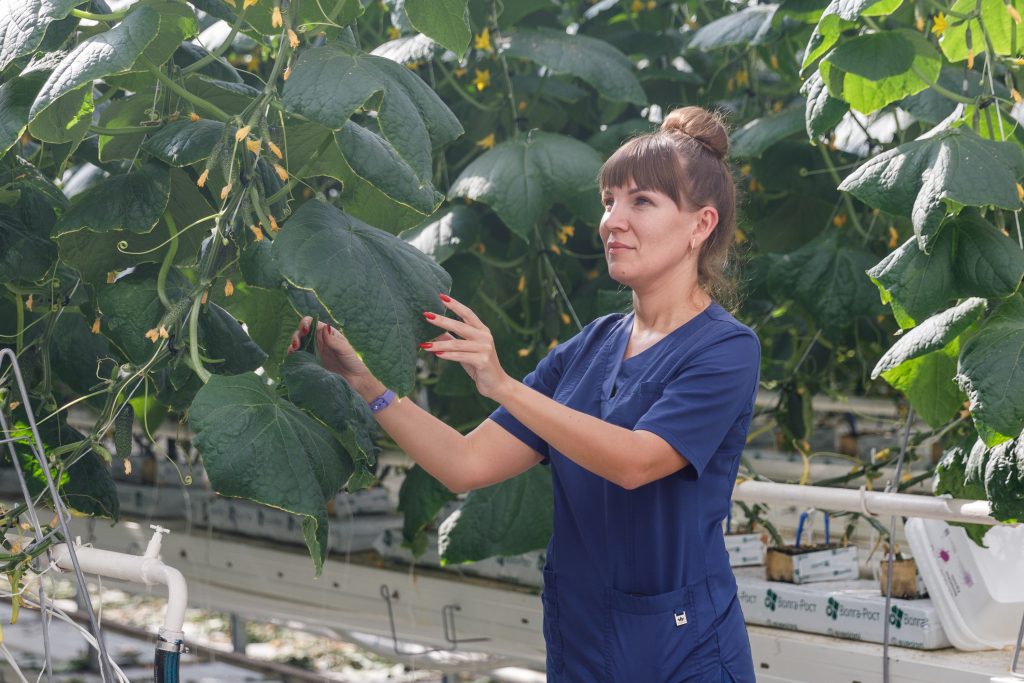
Ksenia Chesnokova: “Plants can feel people”
Ksenia Chesnokova has been working in the greenhouses of the “Vegetable Grower” for 14 years and fully controls all greenhouses of cucumbers
Photo: Alexey Volkhonsky
Almost a thousand people work on the cultivation of vegetables in the “Vegetable Grower”. In general, there are not so few professions in the greenhouse complex. Only agronomists — several different specializations. But the main operations for caring for plants — twisting, lowering, pinching, eating fruits — are performed by vegetable growers, mainly representatives of the fair sex. And there are also operators of mineral nutrition, technological equipment, handymen.
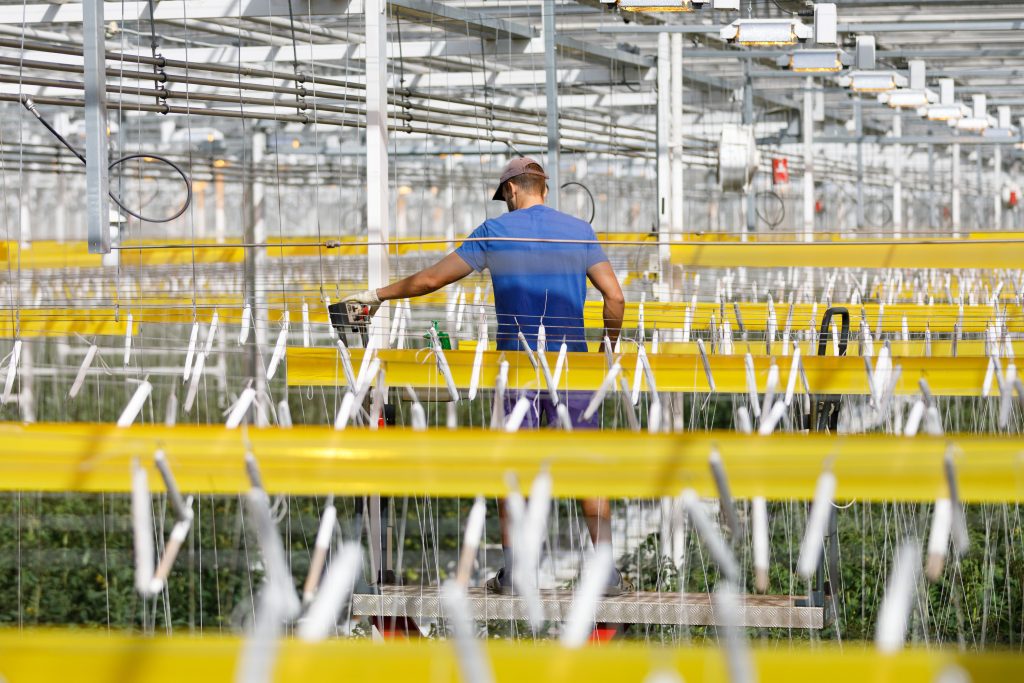
Photo: Alexey Volkhonsky
One of the most responsible professions is the manager of the cucumber department. This position in the “Vegetable Grower” is occupied by the fragile Ksenia Chesnokova — the only representative of the fair sex, in whose “subordination” are all 30 hectares of cucumbers.
— Unlike tomatoes, cucumbers ripen faster — 10 days after flowering, so the turnover of cucumbers occurs several times a year, — says Ksenia. — We put a dropper on each plant, because our vegetables are watered only with drip irrigation, we add top dressing.
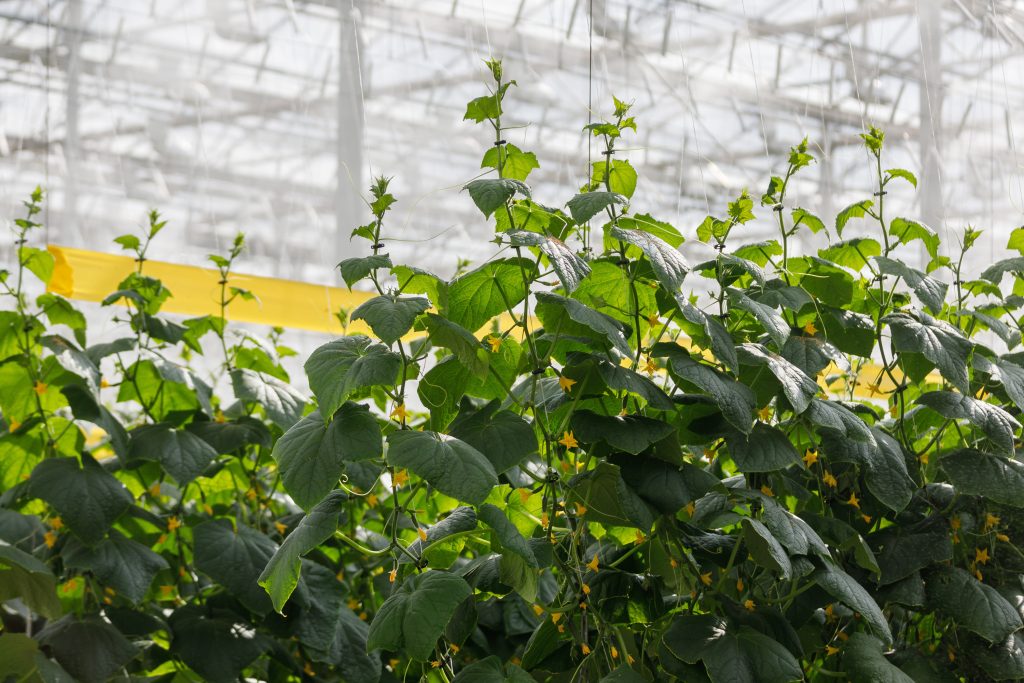
125,000 plants grow on five hectares of cucumber greenhouse — every three months they are removed and new ones are planted
Photo: Alexey Volkhonsky
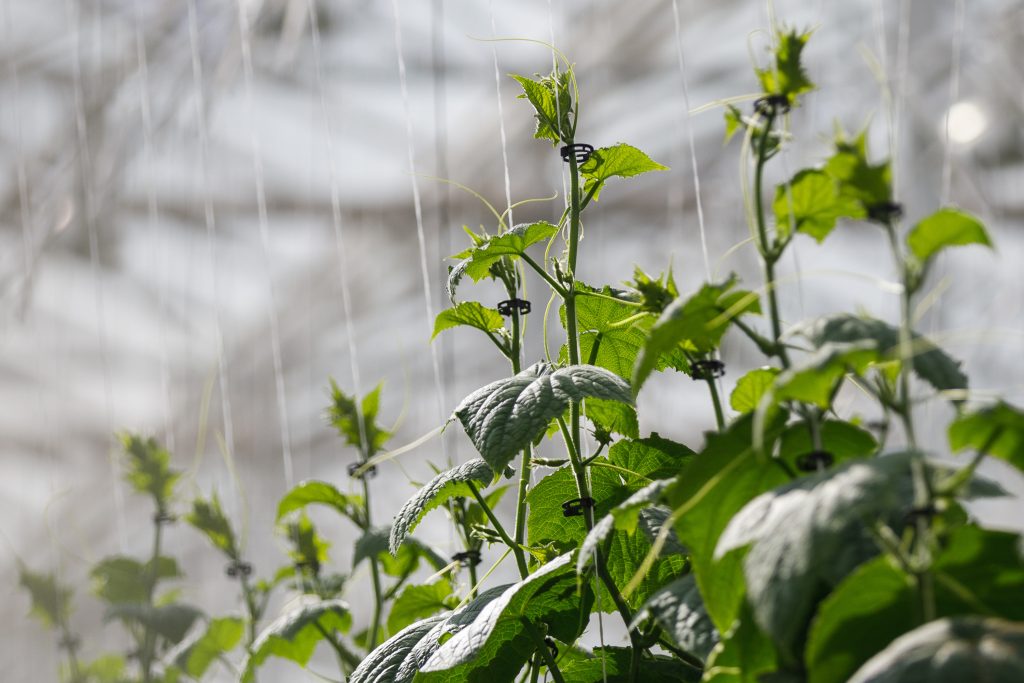
In addition to bumblebees, greenhouses buy entomophages — predatory insects to control pests (for example, whitefly) only by biological methods
Photo: Alexey Volkhonsky
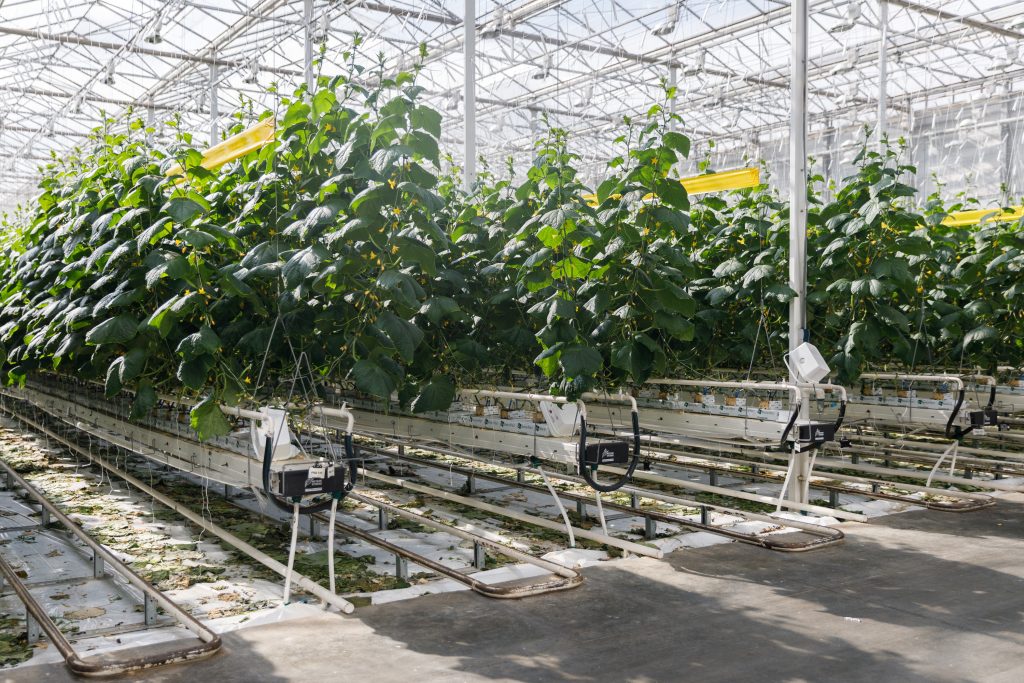
About 35-40 kilograms of cucumbers are obtained from one square meter
Photo: Alexey Volkhonsky
Over the years in vegetable growing, Ksenia noticed that plants feel people. Previously, the greenhouse area was assigned to each employee and it was possible to see how some yields are noticeably higher and the plants themselves are stronger and “satisfied”. She herself talks every morning not only with her employees, but also with plants in greenhouses. “We give them everything they need, help them grow, that’s why they feel good about us,” Ksenia explains.
All employees in greenhouses are very responsible, since the work of the whole team depends on everyone: one did not come to work — the rest will have to be processed
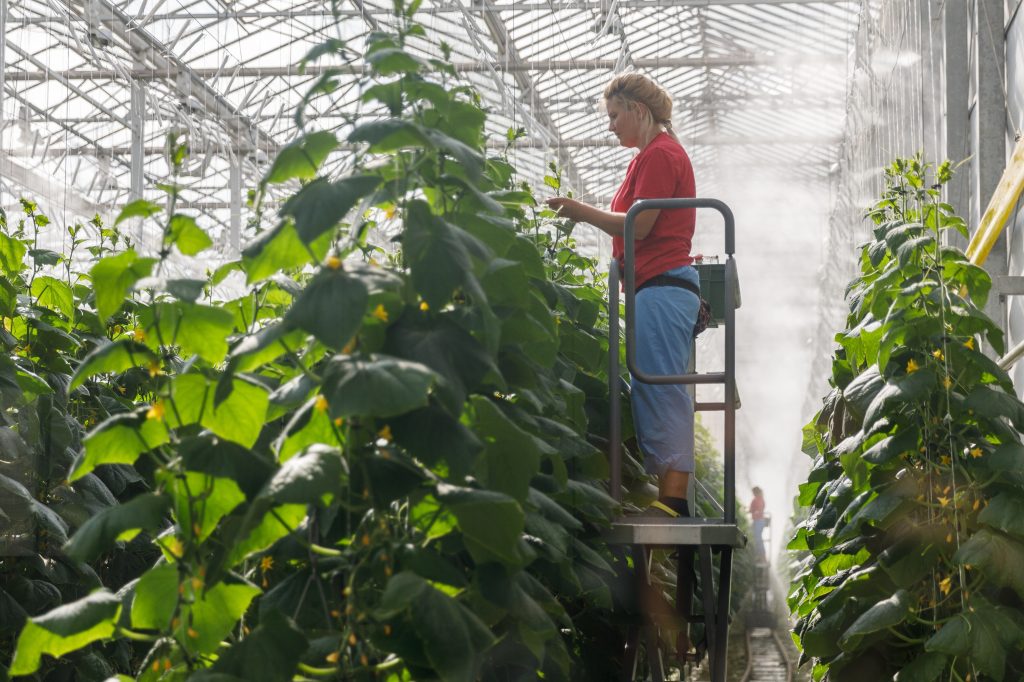
The most “responsive”, according to vegetable growers, are small prickly cucumbers of the “Bjorn” variety. This hybrid gives delicious and healthy fruits, and most importantly — a great yield. Any novice vegetable grower can cope with its cultivation, therefore, it is ideal for industrial greenhouses.
The greenhouse “Bjorn” was planted in September. The first harvest began to be removed after 20 days. From the moment of tying the fetus to its removal, approximately 10 days pass. Then the fruits are removed and sent to the logistics center.
Andrey Shabarshov: “I have never been disappointed in my profession”
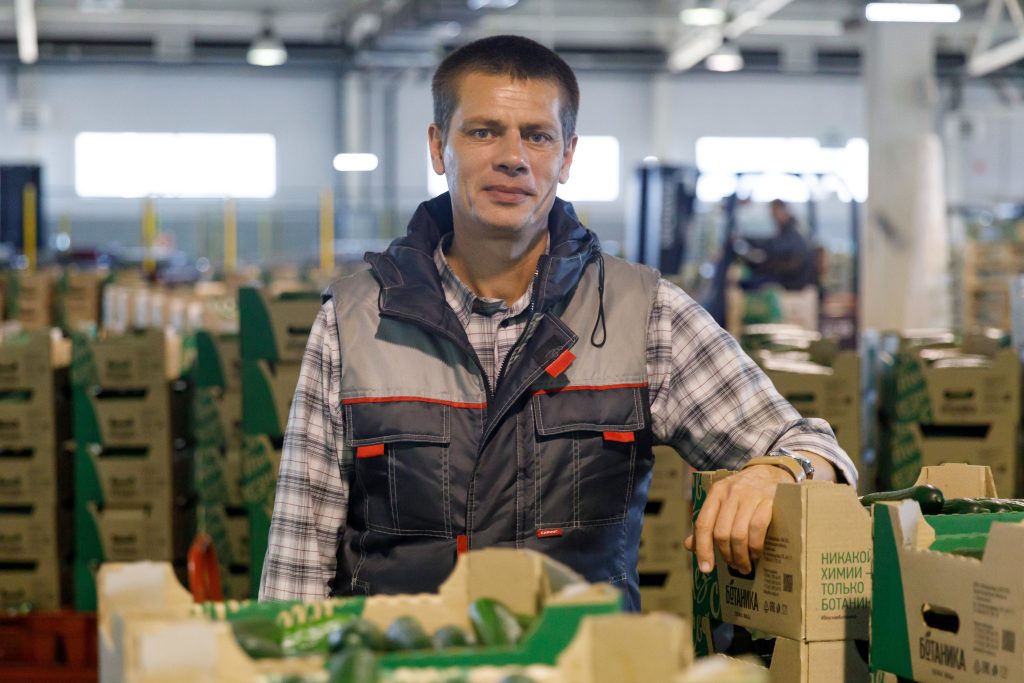
Andrey Shabarshov has been working in vegetable growing since the 90s and has seen the development of the industry from the inside
Photo: Alexey Volkhonsky
In the “Vegetable Grower” tons of vegetables are grown and packaged all year round. There are two logistics centers in the greenhouse complex, one of them is supervised by Andrey Shabarshov. He came to vegetable growing in the 90s, as he himself says, by chance, after the army. I started as a simple loader, studied all the logistics of the industry from the inside and moved to greenhouses.
— This is an interesting job, it requires ingenuity. Every day we need to solve new tasks and distribute the flows of the logistics center,” says Andrey. — Now about 200 tons of cucumbers a day pass through it, in high season it will be much more.
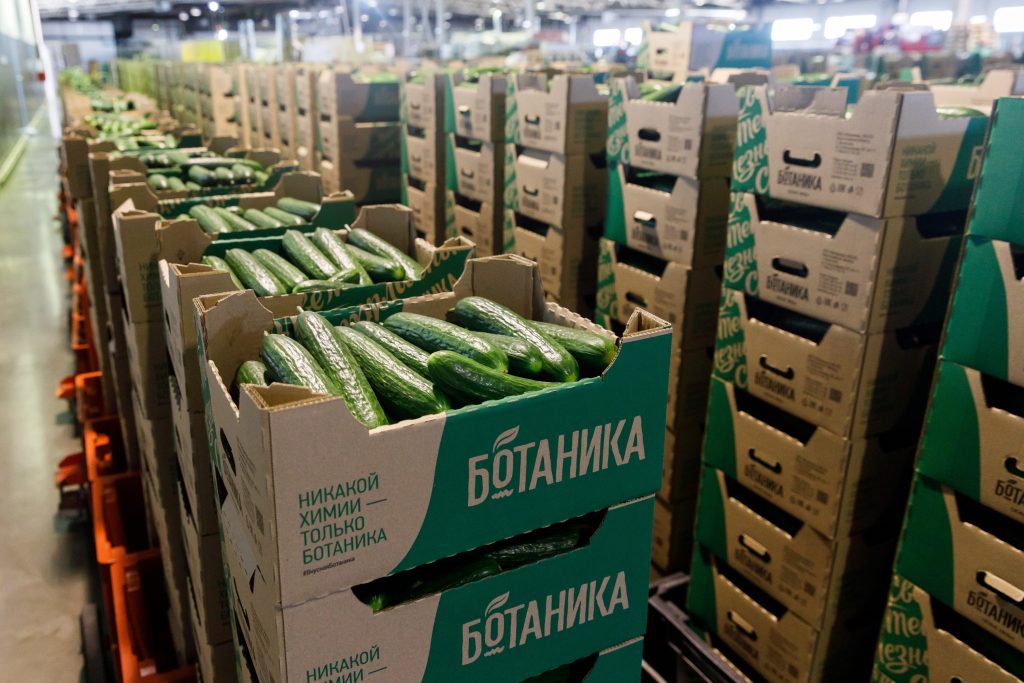
The packing of vegetables is called a quantum — this is 8 kilograms of delivery
Photo: Alexey Volkhonsky
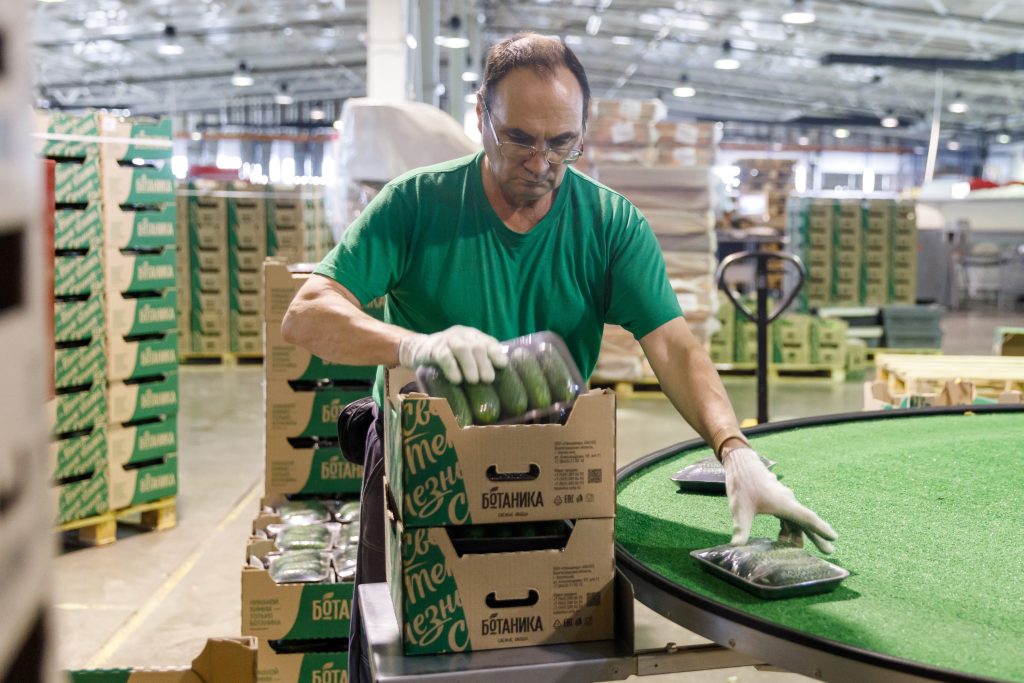
Photo: Alexey Volkhonsky
You can’t see any amateur activity in the logistics center — all processes are clearly debugged. Vegetables are packaged by weight and size — cucumber to cucumber — and packed for further shipment to retail chains. But before that, they are cooled to 12 degrees — this is an important stage, which determines the condition in which they will reach the consumer.
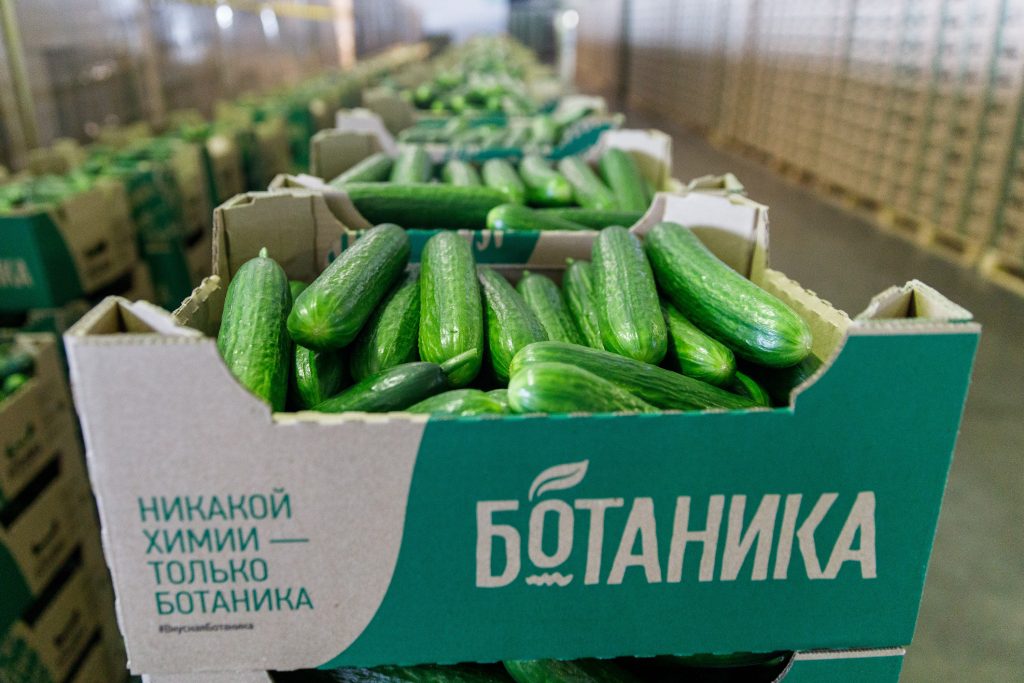
Photo: Alexey Volkhonsky
to share
The products of Volga vegetable growers are usually eagerly awaited and preferred to imported vegetables. The high season in BOTANY begins in November — logistics centers will be filled with vegetables to the limit and will continue to supply them to large networks so that residents of not only the Volgograd region, but also many other regions of Russia can enjoy “live” cucumbers and tomatoes even in cold winter. And not to be content with glossy imports that have neither taste nor smell.
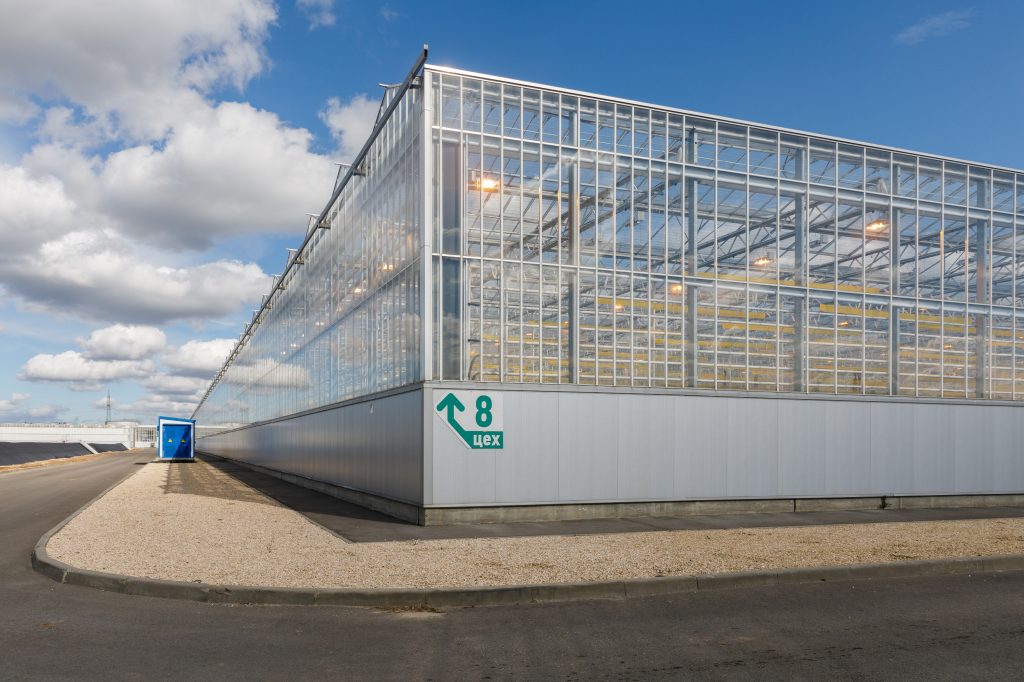
The greenhouses of the “Vegetable Grower” (known under the brand name “BOTANY”) look amazing both inside and out
Photo: Alexey Volkhonsky
LLC “Vegetable grower”, www.botanika-only.ru .
A source: https://v1.ru/
